#Noel Langley
Explore tagged Tumblr posts
Quote
Now I know I've got a heart because it is breaking.
Noel Langley
#Noel Langley#motivation#quotes#poetry#literature#relationship quotes#writing#original#words#love#relationship#thoughts#lit#prose#spilled ink#inspiring quotes#life quotes#quoteoftheday#love quotes#poem#aesthetic
229 notes
·
View notes
Text
youtube
Just uploaded a performance of the composition "Seventy Cops" performed live by JG Thirlwell's Steroid Maximus at Le Pompidou in Paris on April 12 2003. Some additional footage shot at Le Lieu Unique in Nantes on April 11 2003.
This arrangement was recorded and released on the Steroid Maximus album Ectopia. The album is available digitally at foetus.org or Bandcamp
The footage was shot and edited by Clement Tuffreau in 2003. It was enhanced by JG Thirlwell in 2025.
Please subscribe to the JG Thirlwell YouTube channel. More to come!
#JG Thirlwell#steroid maximus#venture bros#foetus#youtube#Le Pompidou#Steven Bernstein#Jan Orawiec#Faustine Orawiec#Guillaume Francois#Oene van Geel#Vincent DeBruyne#Renaud Pion#Steve Arguelles#Noel Akchote#Ashley Slater#Didier Havet#Allie Delfau#Laurent Levesque#Jean-Philippe Morel#Xavier Mertian#Iian Pattinson#Antoine Rousseau#Noel Langley#Clement Tuffreau#Youtube
20 notes
·
View notes
Quote
Now I know I've got a heart because it is breaking.
Noel Langley
#Noel Langley#motivation#quotes#poetry#literature#relationship quotes#writing#original#words#love#relationship#thoughts#lit#prose#spilled ink#inspiring quotes#life quotes#quoteoftheday#love quotes#poem#aesthetic
361 notes
·
View notes
Quote
Now I know I’ve got a heart because it is breaking.
Noel Langley; The Wizard of Oz
#noel langley#the wizard of oz#text#quote#quotes#love#love quotes#life#life quotes#relationship#relationship quotes#beautiful#aesthetic#art#indie#hipster
360 notes
·
View notes
Quote
Now I know I've got a heart because it is breaking.
Noel Langley
#Noel Langley#motivation#quotes#poetry#literature#relationship quotes#writing#original#words#love#relationship#thoughts#lit#prose#spilled ink#inspiring quotes#life quotes#quoteoftheday#love quotes#poem#aesthetic
265 notes
·
View notes
Quote
Now I know I've got a heart because it is breaking.
Noel Langley
#Noel Langley#motivation#quotes#poetry#literature#relationship quotes#writing#original#words#love#relationship#thoughts#lit#prose#spilled ink#inspiring quotes#life quotes#quoteoftheday#love quotes#poem#aesthetic
120 notes
·
View notes
Quote
Now I know I've got a heart because it is breaking.
Noel Langley
#Noel Langley#motivation#quotes#poetry#literature#relationship quotes#writing#original#words#love#relationship#thoughts#lit#prose#spilled ink#inspiring quotes#life quotes#quoteoftheday#love quotes#poem#aesthetic
66 notes
·
View notes
Text
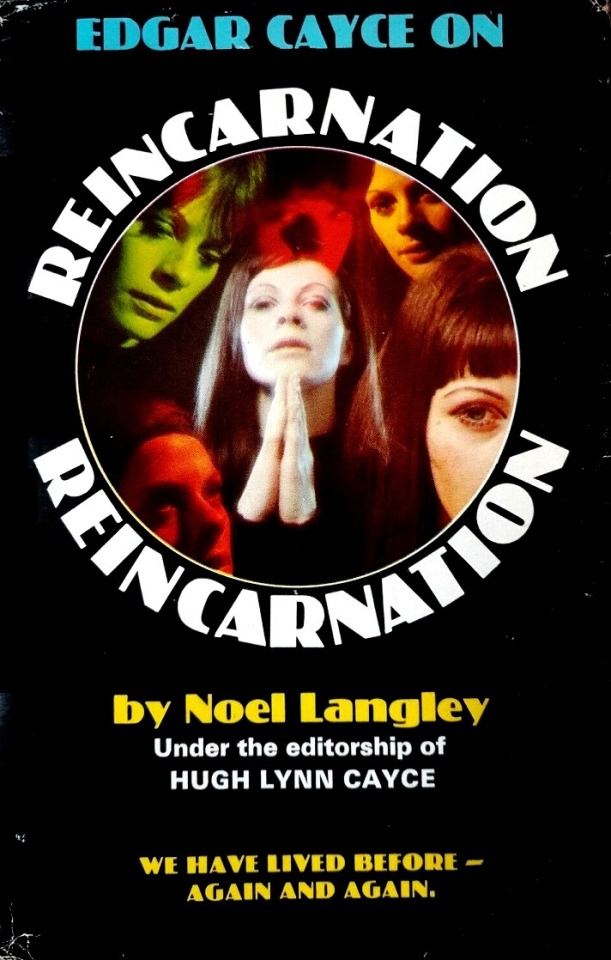
Noel Langley, Hugh Lynn Cayce - Edgar Cayce on Reincarnation - Howard Baker - 1969
#witches#reincarnated#occult#vintage#edgar cayce on reincarnation#edgar cayce#noel langley#hugh lynn cayce#reincarnation#howard baker books#1969#we have lived before
85 notes
·
View notes
Text
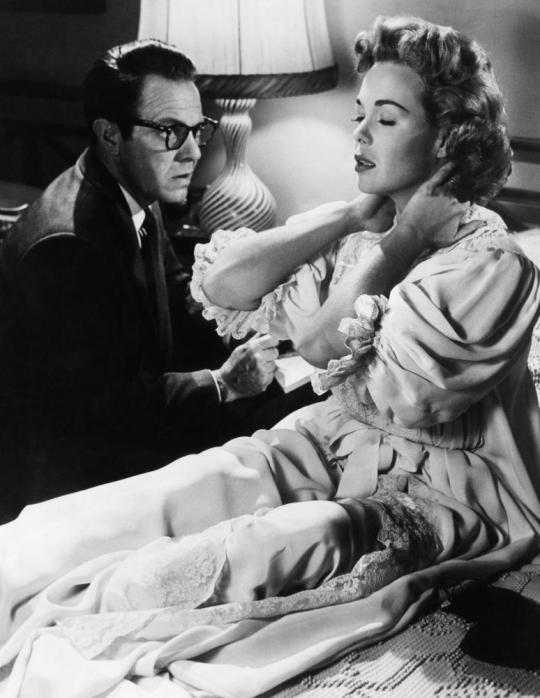
Louis Hayward-Nancy Gates "The search for Bridey Murphy" 1956, de Noel Langley.
4 notes
·
View notes
Note
hi neil! sorry to bother you with an ask you probably get a lot, but how do you make your writing captivating to read? I have a decent plot and some nice characters, but i feel like my writing is still very bland, and it's not doing the concept justice. there are a lot of books that are an absolute joy to read because of how wonderful the actual writing is, and i'm wondering how one goes about adding that element to their writing.
neil fans pls don't angry dm me like last time, that was really weird
A lot of it is experience. Do it enough and you will. As with anything— learning to play the piano, say — you are going to get more accomplished as you do it. That being said, some things you can learn. And one way to learn those things is to copy.
Find authors with recognisable and delightful styles, whose work you love, reread them and then try writing a paragraph in their style. Pretend to be Dickens or Ray Bradbury, PL Travers or e e cummings and see what happens. See what you do with words.
My first book (unpublished and not very good) doesn’t read like me at all. It reads like a weird mixture of Noel Langley and Hugh Lofting and Roald Dahl. But there is a page about 3/4 of the way through that reads just like me.
1K notes
·
View notes
Text
What Oz could have been: the 1939 movie
Last time I talked about what Disney's "Oz: The Great and Powerful" would have originally looked like, based on the first version of the script. But today I want to talk about THE big Oz movie, THE classic: the 1939 MGM movie.

Everybody knows this picture, it became iconic and cult, and is such a big part of culture today... Yet, you might be surprised to learn that the movie could have ended up looking VERY different from the one we know today.
Indeed, the "Wizard of Oz" script kept being written and re-written and re-re-written by a dozen of different authors and co-authors, to the point that when it came time to credit who was behind the script problems arose to find an exact name to put on there... If you want to know the detail: a first draft was by William H. Cannon, Mervyn LeRoy's assistant, before the contracts were set and when everything was just beginning. Once the project started, the first full scenario was written by Irving Brecher, but he was then overtaken by another project and replaced by Herman J. Mankiewicz, who worked for one month over the script until a co-author arrived in the form of Ogden Nash. Then a third author joined the team: Noel Langley (he was the one who had the idea of changing the Silver Slippers in Ruby Slippers, and he brought the idea that the three Oz companions would have counterparts as farm helpers in Kansas). HOWEVER Mankiewicz ended up quitting the team. He was replaced by Herbert Fields, who only stayed for three days and didn't change anything, before being also replaced by Samuel Hoffenstein, who also only stayed for a few days without modifying much (or anything). FINALLY Noel Langley gave back the final product of the writers' team... Which of course was edited, rewriten and modified by a second team, formed of Florence Ryerson and Edgar Allan Woolf. They were then brutally moved to another movie, and the script returned into the hands of Noel Langley to be again rewriten and adapted. One month before the movie started Noel Langley was given another co-author, Jack Mintz, and the second "final" scenario was delivered... Before being corrected and modified by a new author recently brought by Victor Fleming, John Lee Mahin. And THEN it was done!
Of the fourteen different authors that worked on the script, only three ended up being given credit in the final picture: Noel Langley, Florence Ryerson, and Edgar Allan Woolf.
The result was a project that varied wildly in production. In fact, while the final movie is still vaguely faithful though a bit loose adaptation of the original novel - the very first drafts of the movie had NOTHING to do with the original novel. The "faithfulness" to Baum's Wizard of Oz can be considered almost an accident as each rewrite got closer to Baum's story, only in an effort to get away from the older script... Anyway, here are some highlights and best-offs of the Oz movie we could have had:

The MGM movie has a lot of deleted scenes and songs, that were recorded but not included in the movie. Hopefully a lot of them were released online and can be easily found on Youtube, or elsewhere on the Internet. Most of them were cool reprises that were cut short for time: for example the song "The Wicked Witch is Dead" had a reprise after the death of the Witch of the West, sung first by the Winkies Guards and then morphing into the song being sung by the Emerald City denizens (fragments of this reprise were still used in trailers for the movie). There is also the very famous "Over the Rainbow" reprise that a scared, crying Dorothy was to sing while trapped in the Witch of the West's castle, before the Witch taunted her with an image of Aunt Em in the crystal ball. The reprise is REALLY touching and Judy Garland really put her best in there. There are also alternate takes which reveal a lot about what the movie was intended to be - for example we have alternate records of the "Lollypop Guild" which shows that the high-pitched voice of the final movie was actually an intent to create a "little boys" voice, to match the little girls of the Lullaby League.
The most famous of all these deleted songs is without a doubt the "Jitterbug" song. It was only cut at the last minute, and this brutal removal leaves bizarre remnants in the final movie (for example the Witch says she "sent a bug" to take care of Dorothy and her friends ; and when the Flying Monkey arrive they look sweating and exhausted). This was because originally the Wicked Witch of the West was supposed to send to the heroic party a magical bug (the titular "Jitterbug") that would have forced them to dance until exhaustion, so the Winged Monkeys could easily pick them up. This was however removed out of fear this would date the movie, and they were very much right... Because the entire pun on which the scene relies does not work anymore today: the "Jitterbug" being a specific style of dance very popular in the 1930s and 1940s, but that stopped existing beyond the 1960s. However the "Jitterbug song" earned enough of a fame to get included into the recent "Tom and Jerry" animated movie of "The Wizard of Oz".
Originally, a child-actress was envisioned for Dorothy, and the first choice was Shirley Temple. She declined (but she would later play the role of Tip/Ozma in a Marvelous Land of Oz production). When Judy Garland was cast, there were attempts at giving her a makeup that would make her look more like a child - but everybody pointed out it made her into a ridiculous "baby doll". The first plans were also to have Dorothy be blond, as she was in later Oz books.

Everybody knows the iconic, creepy look of the Wicked Witch of the West, but did you know she was supposed to be... beautiful? One of the main and biggest inspirations for the MGM movie was the huge success of Disney's Snow-White and the Seven Dwarfs. Since they attempt to recreate it, their original plan for the Wicked Witch of the West was to have her be a beautiful villainess evoking the Evil Queen of Disney. The original actres cast for this "glamorous witch" was Gale Sondergaar, and we still have shots of her in costume. However it was later decided to make the witch into an uglier, more grotesque character evoking a traditional fairytale hag. Mervy LeRoy was the one who wanted to have the "glamorous, sexy" witch but many (among which Arthur Freed) defended the idea that the witch had to be like Disney's old crone, not evil queen... So they decided to recast the role - leading to the arrival of the one of a kind Margaret Hamilton.
Speaking of the Wicked Wich: One of the original plans for the character was to have her be the Oz counterpart of... Aunt Em. Indeed, no Miss Gulch of any kind. Early on, Aunt Em was considered to be a meaner and colder caretaker to Dorothy, and the one who wanted to get rid of Toto - which explains why she became the Wicked Witch of Oz. (This idea was by Langley, the one who also had the idea of making Dorothy's companions into the farm-helps of Kansas) The Wicked Witch also had a son, Bulbo, an ugly and dim-witted man she wanted to make King of Oz, and who was... the counterpart of Uncle Henry. Later, when the character of Miss Gulch was created, she was given a son named Walter to match Bulbo, before the character was scrapped altogether.
The Jitterbug scene was actually a left-over of a much earlier version of the movie which would have put a strong emphasis on the "musical aspect". This version wanted Oz to be under the tyranny of a spoiled brat of a princess that would have outlawed all forms of music that were not classical music and opera ; young and hip Dorothy, however, would have brought the swing and the jazz from the 1930s USA and used it to win over the princess in a singing duel, and becoming a hero in Oz. Who would have played the princess? I had conflicting reports: some say Deanna Durbin (one of the early candidates for playing Dorothy, alongside Shirley Temple) was considered for the role ; others said it would have been Betty Jaynes playing a certan "Princess Betty".

The earliest version of the script we have (created by William H. Cannon) was heavily inspired by the 1925's Wizard of Oz movie (because yes, there were Wizard of Oz movies before the MGM one), and wanted to remove all forms of magic and supernatural from the story. The brainless scarecrow would have been a man so dumb the only job he could find was to scare crows in fields ; the Tin Man was supposed to be a heartless criminal that the law had forced to wear a suit of tin as a punishment, punishment which did encourage him to learn kindness...
Oh yes, everybody noted in the final movie how Dorothy favorizes the Scarecrow above the other companions. This is a remnant of the scenario drafts wher the final scene of the movie would have been the teary farewell of Dorothy to Hunk, as he leaves for agricultural college and she promises him to write him every day - implying a romance between the two...
People might note a bizarre editing during the scene of the companions freeing Dorothy - such as the door being axed down not corresponding to the door the group escapes from. This is due to yet another cut sequence: the door the companions axed down was to be a trap by the Wicked Witch, who was to imitate Dorothy's voice and song to lure the companions. Once she had captured the three friends, she would have used them as baits, forcing them to call out for Dorothy and to encourag her to take a magical "rainbow bridge" that appeared out of nowhere... Except said bridge would have been created by the Wicked Witch's magic, and while the rainbow was solid enough to walk onto for a certan distance, at one point it returned to being just light. The Witch hoped to kill Dorothy by doing this - but didn't count on the Ruby Slippers' magic actually preventing Dorothy from falling through the rainbow.
Before it was decided to have Glinda send snow to kill the cursed poppies, the original concept was that the Tin Man's tears would have awakened Dorothy (an idea that, as people pointed out, was reused in "The Wiz").

There was at one point plans for the Cowardly Lion to actually be just a... a regular lion that tagged along as a sort of pet with the team, and had dubbed lines, to be revealed as "Prince Florizel", a Prince Charming-type of character that had been cursed under the shape of a lion, and would in the end have married his lover, princess Sylvia (this version was one of Noel Langley's, and very influenced by traditional fairytales). This version most notably pushed Dorothy into being a secondary character: it was the Prince/Lion who was to kill the Witch, by somehow cutting her broom so it would fall into pieces while in the air. There was also a dragon the prince was supposed to fight. This version, being Langley's, was the one that included the Witch having a son (see above). In the older versions of this story, the Witch's plan to make Bulbo king of Oz was to have him marry princess Sylvia, heir to the Ozian throne (hence why Florizel's feud with the Witch is personal) ; later it was changed to the Witch planning to attack the Emerald City and dethrone the Wizard with an army of men, wolves and winged monkeys.
When the MGM learned that Disney was working on their own adaptation of the Wizard of Oz back then, there were brief talks of the two studios uniting their efforts to make a half-live-action, half-animated movie.
During the scene where the Wicked Witch threatens the companions at the cottage in the forest, the Witch was supposed to threaten the Tin Man by briefly turning him into a "beehive", aka filling him with bees, and after crushing one of the insects the Tin Man would have cried, causing his jaw to rust and be blocked.
Early on, there were plans to keep Oz as an actual magical place that truly existed - but the movie-makers of the time considered fantasy was not "sophisticated" and "serious" enough for the audiences, and so they added the entire idea of Oz being shown as a dream-world so adults could "buy" the movie.
#what oz could have been#the wizard of oz#1939 wizard of oz#mgm wizard of oz#oz#wizard of oz#deleted scenes#what could have been
55 notes
·
View notes
Text

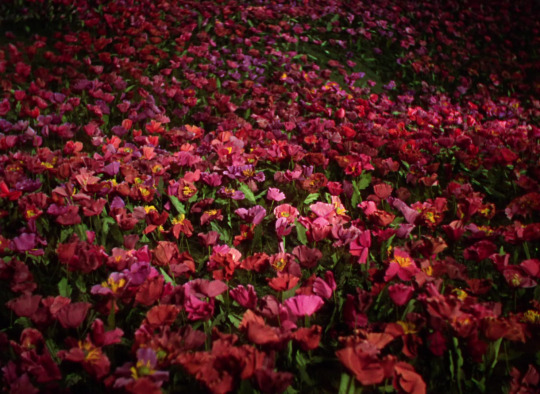
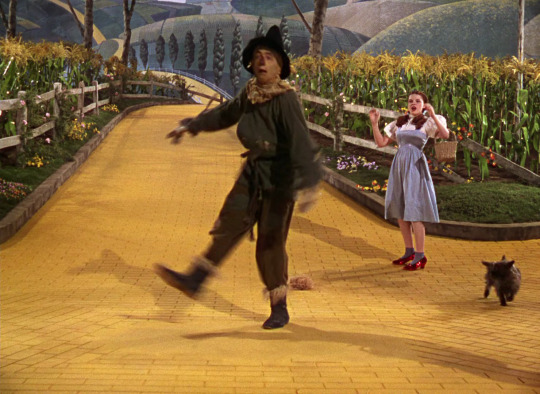



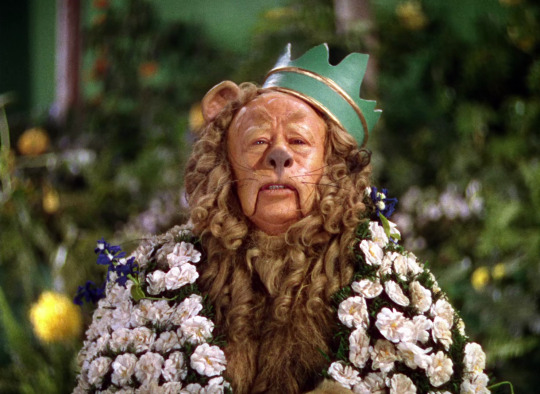
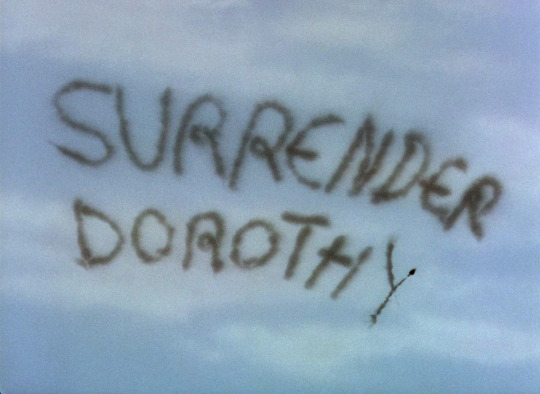
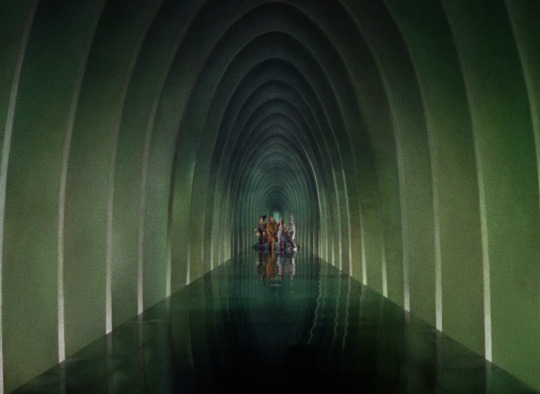

The Wizard of Oz, 1939.
Dir. Victor Fleming | Writ. Noel Langley, Florence Ryerson & Edgar Allan Woolf | DOP Harold Rosson
#the wizard of oz#judy garland#victor fleming#musical film#musical fantasy#1930s#frank l. baum#10 frames
158 notes
·
View notes
Text

The Wizard of Oz will be released on Steelbook 4K Ultra HD + Blu-ray + Digital on November 5 via Warner Bros. The 1939 musical fantasy classic is celebrating its 85th anniversary.
Victor Fleming (Gone with the Wind) directs from a script by Noel Langley, Florence Ryerson, and Edgar Allan Woolf, based on L. Frank Baum's 1900 novel The Wonderful Wizard of Oz. Judy Garland, Frank Morgan, Ray Bolger, Bert Lahr, Jack Haley, Billie Burke, and Margaret Hamilton star.
The limited edition Steelbook comes with reproductions of the film's original program, premiere invitation, eight lobby cards, two poster cards, and a movie ticket.
The Wizard of Oz has been remastered from an 8K 16bit scan of the original Technicolor camera negative with Dolby Vision HDR and Dolby Atmos sound. Special features are listed below, where you can also see the set's contents.

Special features:
The Wonderful Wizard of Oz: The Making of a Movie Classic
Prettier than Ever: The Restoration of Oz
Deleted Scenes/Behind the Scenes
Dorothy and her dog Toto are caught in a tornado's path and somehow end up in the land of Oz. Here she encounters some memorable friends and foes in her journey to meet the Wizard of Oz who everyone says can help her return home and possibly grant her new friends their goals of a brain, heart and courage.
Pre-order The Wizard of Oz.
#the wizard of oz#wizard of oz#judy garland#margaret hamilton#victor fleming#steelbook#dvd#gift#l. frank baum#l frank baum#frank morgan#ray bolger#bert lahr#jack haley#billie burke
16 notes
·
View notes
Quote
“Now I know I’ve got a heart because it is breaking.” - Noel Langley
230 notes
·
View notes
Text
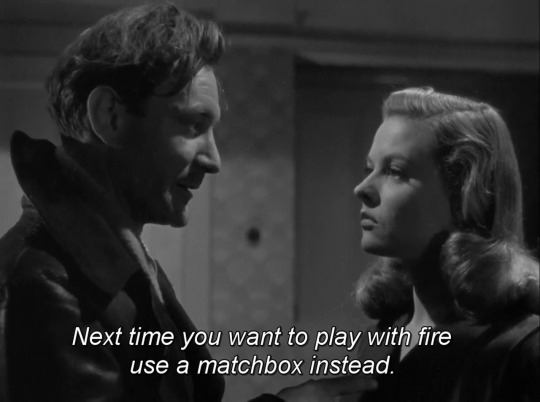
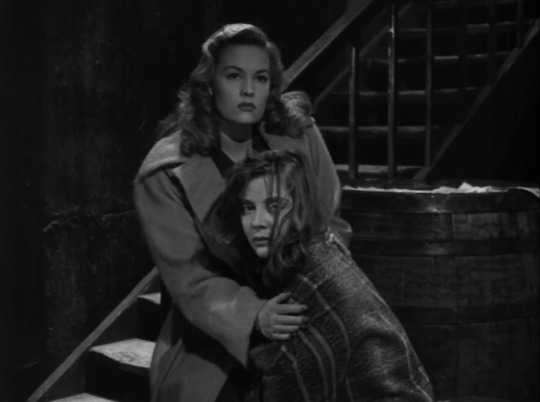
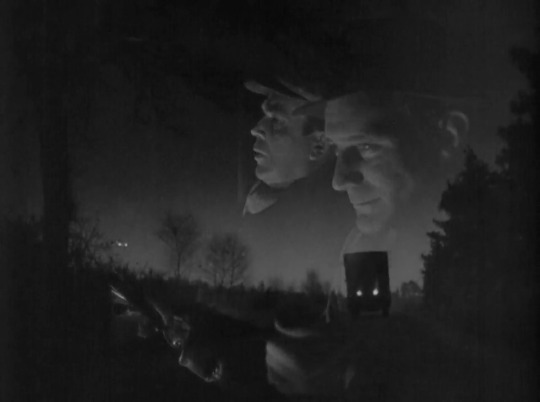
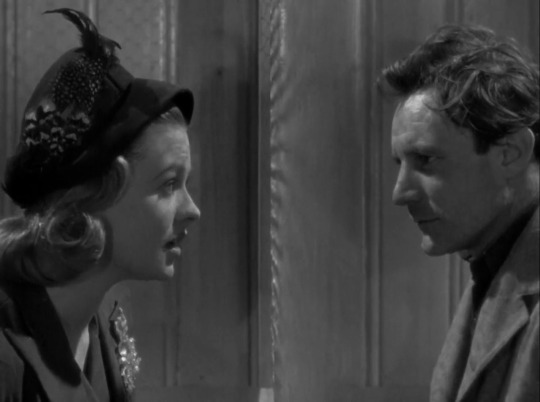

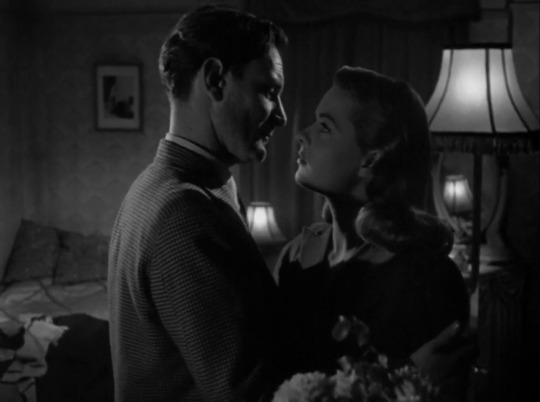
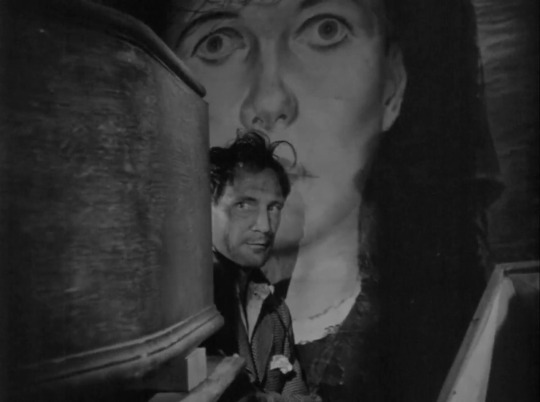
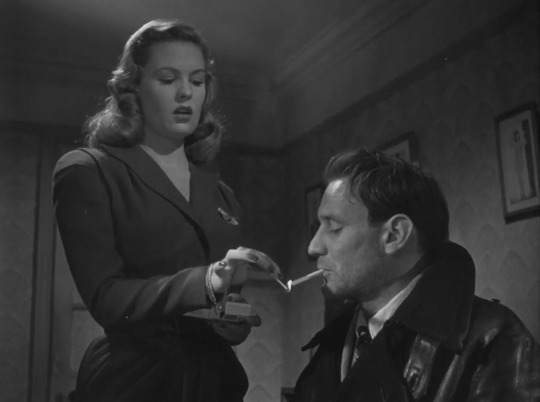



They Made Me a Fugitive (also known as They Made Me a Criminal; U.S. title: I Became a Criminal) is a 1947 British film noir directed by Alberto Cavalcanti and starring Sally Gray and Trevor Howard. It was written by Noel Langley, based on the 1941 Jackson Budd novel A Convict Has Escaped. Cinematography was by Otto Heller.
“I loved They Made Me a Fugitive," says director Wes Anderson. "The grittiness and the style and the great, great dialogue. It’s very good, and very hard. The violence of the language is much more blunt than you’d ever expect. Trevor Howard is great".
"Another thing that intrigued me about They Made Me a Fugitive was that it always seemed like it was going to veer into pure expressionism," says Anderson. "That expressionist current of feeling combines with the location shooting and the type of story being told, the rawness of it all, to give the movie a documentary-ish flavor. It’s a strange combination. And the dialogue is so graphic and blunt. It’s not just hard-boiled, it’s kind of funny, and I think they meant it to be?”
#film noir#They Made Me a Fugitive#1940s#They Made Me a Criminal#Alberto Cavalcanti#Cavalcanti#Sally Gray#trevor howard#wes anderson
11 notes
·
View notes
Text
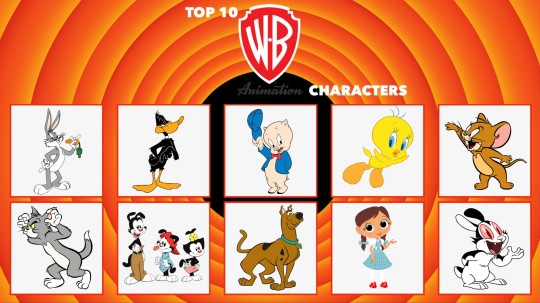
My Top 10 Warner Bros. Animation Characters (2024)
#10 Bunnicula
#9 Dorothy Gale (Dorothy And The Wizard Of Oz)
#8 Scooby-Doo
#7 Yakko, Wakko, And Dot (Animaniacs)
#6 Tom Cat (Tom And Jerry)
#5 Jerry Mouse (Tom And Jerry)
#4 Tweety Bird (Looney Tunes)
#3 Porky Pig (Looney Tunes)
#2 Daffy Duck (Looney Tunes)
And #1 Bugs Bunny (Looney Tunes)
Original Template: https://www.deviantart.com/edogg8181804/art/Top-10-WB-Animation-Characters-Meme-876615961
Bunnicula (TV series) Belongs To James Howe, Deborah Howe, Jessica Borutski, Snipple Animation Studios, Toon City Animation, Inc. Warner Bros. Animation Inc. Cartoon Network, Boomerang, The Cartoon Network, Inc. Warner Bros. Discovery Networks, Warner Bros. Domestic Television Distribution, Warner Bros. Television Studios, Warner Bros. Television Group, Warner Bros. Entertainment Inc. WarnerMedia, And Warner Bros. Discovery, Inc.
Dorothy and the Wizard of Oz Belongs to L. Frank Baum, Noel Langley, Florence Ryerson, Edgar Allan Woolf, Snipple Animation Studios, Boulder Media Limited, Turner Entertainment Company, Warner Bros. Animation Inc. Cartoon Network, Boomerang, The Cartoon Network, Inc. Warner Bros. Discovery Networks, Warner Bros. Domestic Television Distribution, Warner Bros. Television Studios, Warner Bros. Television Group, Warner Bros. Entertainment Inc. WarnerMedia, And Warner Bros. Discovery, Inc.
Scooby-Doo! Belongs To Joe Ruby, Ken Spears, Ruby-Spears Productions, Inc. Hanna-Barbera Cartoons, Inc. Warner Bros. Animation Inc. Kids' WB! The WB, The WB Television Network, Inc. Tribune Broadcasting Company, LLC. Tribune Media Company, Nexstar Media Group, Inc. Cartoon Network, Boomerang, The Cartoon Network, Inc. Warner Bros. Discovery Networks, Warner Bros. Domestic Television Distribution, Warner Bros. Television Studios, Warner Bros. Television Group, Warner Bros. Entertainment Inc. WarnerMedia, And Warner Bros. Discovery, Inc.
Scooby-Doo, Where Are You! Belongs To Joe Ruby, Ken Spears, William Hanna, Joseph Barbera, Iwao Takamoto, Fred Silverman, Hanna-Barbera Cartoons, Inc. Worldvision Enterprises, Inc. Taft Broadcasting Company, Spelling Television Inc. Paramount Domestic Television, CBS Media Ventures, Inc. CBS Studios, Inc. CBS Broadcasting Inc. CBS Entertainment Group, Paramount Global, Turner Program Services, Turner Entertainment Company, Turner Broadcasting System, Inc. Warner Bros. Domestic Television Distribution, Warner Bros. Television Studios, Warner Bros. Television Group, Warner Bros. Entertainment Inc. WarnerMedia, And Warner Bros. Discovery, Inc.
The Scooby-Doo Show Joe Ruby, Ken Spears, Ray Parker, Hanna-Barbera Cartoons, Inc. Worldvision Enterprises, Inc. Taft Broadcasting Company, Spelling Television Inc. Paramount Domestic Television, CBS Media Ventures, Inc. CBS Studios, Inc. CBS Entertainment Group, Paramount Global, Turner Program Services, Turner Entertainment Company, Turner Broadcasting System, Inc. ABC, Disney General Entertainment Content, Disney Entertainment, The Walt Disney Company, Warner Bros. Domestic Television Distribution, Warner Bros. Television Studios, Warner Bros. Television Group, Warner Bros. Entertainment Inc. WarnerMedia, And Warner Bros. Discovery, Inc.
A Pup Named Scooby-Doo Belongs To Joe Ruby, Ken Spears, Tom Ruegger, Wang Film Productions Co., Ltd. Fil Cartoons Inc. Hong Ying Animation Co., Ltd. Klasky-Csupo, Inc. Shanghai Morning Sun Animation Co., Ltd. Mr. Big Cartoons, Pacific Rim Productions, Shenzhen Jade Animation Company, Speedy Victory Animation Company, Hanna-Barbera Cartoons, Inc. Worldvision Enterprises, Inc. Taft Broadcasting Company, Spelling Television Inc. Paramount Domestic Television, CBS Media Ventures, Inc. CBS Studios, Inc. CBS Entertainment Group, Paramount Global, Turner Program Services, Turner Entertainment Company, Turner Broadcasting System, Inc. ABC, Disney General Entertainment Content, Disney Entertainment, The Walt Disney Company, Warner Bros. Domestic Television Distribution, Warner Bros. Television Studios, Warner Bros. Television Group, Warner Bros. Entertainment Inc. WarnerMedia, And Warner Bros. Discovery, Inc.
What's New, Scooby-Doo? Belongs To Joe Ruby, Ken Spears, Sander Schwartz, Wang Film Productions Co., Ltd. DongWoo Animation Co. Ltd. Lotto Animation, Inc. Hosem Animation Studio, Hanna-Barbera Cartoons, Inc. Warner Bros. Animation Inc. Kids' WB! The WB, The WB Television Network, Inc. Tribune Broadcasting Company, LLC. Tribune Media Company, Nexstar Media Group, Inc. Cartoon Network, The Cartoon Network, Inc. Warner Bros. Discovery Networks, Warner Bros. Domestic Television Distribution, Warner Bros. Television Studios, Warner Bros. Television Group, Warner Bros. Entertainment Inc. WarnerMedia, And Warner Bros. Discovery, Inc.
Scooby-Doo! Mystery Incorporated Belongs To Joe Ruby, Ken Spears, Mitch Watson, Spike Brandt, Tony Cervone, DongWoo Animation Co. Ltd. Digital Emation, Inc. Hanna-Barbera Cartoons, Inc. Warner Bros. Animation Inc. Cartoon Network, Boomerang, The Cartoon Network, Inc. Warner Bros. Discovery Networks, Warner Bros. Domestic Television Distribution, Warner Bros. Television Studios, Warner Bros. Television Group, Warner Bros. Entertainment Inc. WarnerMedia, And Warner Bros. Discovery, Inc.
Animaniacs Belongs To Tom Ruegger, Steven Spielberg, TMS Entertainment Co., Ltd. Shanghai Morning Sun Animation Co., Ltd. Wang Film Productions Co., Ltd. StarToons International, LLC, AKOM Production, Ltd. Freelance Animators Co., Ltd. Varga Studio, Ltd. CNK International Co, Ltd. Phillippine Animation Studio Inc. Amblin Entertainment, Inc. Amblin Partners, LLC. Warner Bros. Animation Inc. FOX KIDS, FOX Family Worldwide Inc. FOX Broadcasting Company, FOX Entertainment, FOX Corporation, Kids' WB! The WB, The WB Television Network, Inc. Tribune Broadcasting Company, LLC. Tribune Media Company, Nexstar Media Group, Inc. Warner Bros. Domestic Television Distribution Warner Bros. Television Studios, Warner Bros. Television Group, Warner Bros. Entertainment Inc. WarnerMedia, And Warner Bros. Discovery, Inc.
Animaniacs (2020 Reboot) Belongs To Tom Ruegger, Wellesley Wild, Steven Spielberg, Digital eMation, Inc. Saerom Animation, Inc. Snipple Animation Studios, Tiger Animation, Titmouse Animation, Inc. Tonic DNA Animation, Toon City Animation, Inc. Yowza! Animation, Giant Ant Animation, Studio Yotta, Birdo Studio, Flystudio, Screen Novelties, Amblin Television, Amblin Entertainment, Inc. Amblin Partners, LLC. Warner Bros. Animation Inc. Hulu, LLC. Disney Streaming, Disney Entertainment, The Walt Disney Company, Warner Bros. Domestic Television Distribution Warner Bros. Television Studios, Warner Bros. Television Group, Warner Bros. Entertainment Inc. WarnerMedia, And Warner Bros. Discovery, Inc.
Tom and Jerry Belongs To William Hanna, Joseph Barbera, Wang Film Productions Co., Ltd. Fil-Cartoons, Mr. Big Cartoons, Bardel Entertainment, Inc. Baer Animation Company, CNK International, Seoul Movie Co., Ltd. Toon City Animation Inc. Yearim Productions Co., Ltd. Hanho Heung-Up Co., Ltd. Rough Draft Korea Co. Ltd. Rough Draft Studios, Inc. Lotto Animation, Inc. Renegade Animation, PIP Animation Services Inc. Slap Happy Cartoons Inc. Digital eMation, Inc. Duncan Studio, Rembrandt Films, Sib Tower 12, Inc. MGM Animation/Visual Arts, Metro-Goldwyn-Mayer Cartoon Studio, Harman-Ising Productions, Metro-Goldwyn-Mayer Studios, Inc. MGM Holdings, Inc. Amazon MGM Studios, Amazon.com, Inc. Turner Entertainment Company, Turner Broadcasting System, Inc. Hanna-Barbera Cartoons, Inc. Warner Bros. Animation Inc. Kids' WB! The WB, The WB Television Network, Inc. Tribune Broadcasting Company, LLC. Tribune Media Company, Nexstar Media Group, Inc. Cartoon Network, Boomerang, The Cartoon Network, Inc. Warner Bros. Discovery Networks, Warner Bros. Domestic Television Distribution, Warner Bros. Television Studios, Warner Bros. Television Group, Warner Bros. Entertainment Inc. WarnerMedia, And Warner Bros. Discovery, Inc.
The Tom and Jerry Show (1975 TV series) Belongs To William Hanna, Joseph Barbera, Hanna-Barbera Cartoons, Inc. Metro-Goldwyn-Mayer Television, MGM Worldwide Television Group and Digital, Metro-Goldwyn-Mayer Studios, Inc. MGM Holdings, Inc. Amazon MGM Studios, Amazon.com, Inc. Turner Entertainment Company, Turner Broadcasting System, Inc. ABC, Disney General Entertainment Content, Disney Entertainment, The Walt Disney Company, Warner Bros. Domestic Television Distribution, Warner Bros. Television Studios, Warner Bros. Television Group, Warner Bros. Entertainment Inc. WarnerMedia, And Warner Bros. Discovery, Inc.
The Tom and Jerry Comedy Show Belongs To William Hanna, Joseph Barbera, Tex Avery, Filmation Associates, Classic Media, LLC, DreamWorks Classics, DreamWorks Animation LLC, Universal Pictures Television LLC, Universal Studio Group, NBCUniversal Media Group NBCUniversal Media, LLC, Comcast Corporation, Metro-Goldwyn-Mayer Cartoon Studio, Metro-Goldwyn-Mayer Television, MGM Worldwide Television Group and Digital, Metro-Goldwyn-Mayer Studios, Inc. MGM Holdings, Inc. Amazon MGM Studios, Amazon.com, Inc. Turner Entertainment Company, Turner Broadcasting System, Inc. CBS Broadcasting Inc. CBS Entertainment Group, Paramount Global, Warner Bros. Domestic Television Distribution, Warner Bros. Entertainment Inc. WarnerMedia And Warner Bros. Discovery, Inc.
Tom & Jerry Kids Belongs To William Hanna, Joseph Barbera, Wang Film Productions Co., Ltd. Fil Cartoons Inc. Mr. Big Cartoons, Hanna-Barbera Cartoons, Inc. Turner Entertainment Company, Turner Broadcasting System, Inc. FOX KIDS, FOX Family Worldwide Inc. FOX Broadcasting Company, FOX Entertainment, FOX Corporation, Warner Bros. Domestic Television Distribution, Warner Bros. Television Studios, Warner Bros. Television Group, Warner Bros. Entertainment Inc. WarnerMedia, And Warner Bros. Discovery, Inc.
Tom and Jerry Tales Belongs To William Hanna, Joseph Barbera, Rob LaDuca, Jeff Davison, Toon City Animation Inc. Yearim Productions Co., Ltd. Rough Draft Korea Co. Ltd. Rough Draft Studios, Inc. Lotto Animation, Inc. Turner Entertainment Company, Warner Bros. Animation Inc. Kids' WB! The WB, The WB Television Network, Inc. Tribune Broadcasting Company, LLC. Tribune Media Company, Nexstar Media Group, Inc. Cartoon Network, Boomerang, The Cartoon Network, Inc. Warner Bros. Discovery Networks, Warner Bros. Domestic Television Distribution, Warner Bros. Television Studios, Warner Bros. Television Group, Warner Bros. Entertainment Inc. WarnerMedia, And Warner Bros. Discovery, Inc.
The Tom And Jerry Show Belongs To William Hanna, Joseph Barbera, Darrell Van Citters, Renegade Animation, PIP Animation Services Inc. Slap Happy Cartoons Inc. Turner Entertainment Company, Warner Bros. Animation Inc. Cartoon Network, Boomerang, The Cartoon Network, Inc. Warner Bros. Discovery Networks, Warner Bros. Domestic Television Distribution, Warner Bros. Television Studios, Warner Bros. Television Group, Warner Bros. Entertainment Inc. WarnerMedia, And Warner Bros. Discovery, Inc.
Tom and Jerry in New York Belongs To William Hanna, Joseph Barbera, Darrell Van Citters, Renegade Animation, Turner Entertainment Company, Warner Bros. Animation Inc. HBO Max, WarnerMedia Direct, LLC. Warner Bros. Discovery Global Streaming and Interactive Entertainment, Warner Bros. Domestic Television Distribution Warner Bros. Television Studios, Warner Bros. Television Group, Warner Bros. Entertainment Inc. WarnerMedia, And Warner Bros. Discovery, Inc.
Tom and Jerry Special Shorts Belongs To William Hanna, Joseph Barbera, Peter Browngardt, Yowza! Animation, Turner Entertainment Company, Warner Bros. Animation Inc. HBO Max, WarnerMedia Direct, LLC. Warner Bros. Discovery Global Streaming and Interactive Entertainment, Warner Bros. Domestic Television Distribution Warner Bros. Television Studios, Warner Bros. Television Group, Warner Bros. Entertainment Inc. WarnerMedia, And Warner Bros. Discovery, Inc.
Tom and Jerry (2022) Belongs To William Hanna, Joseph Barbera, Fanworks Inc. Studio Nanahosi, Turner Entertainment Company, Warner Bros. Japan, Cartoon Network Japan, Discovery Japan, Turner Broadcasting System Asia Pacific, WarnerMedia Entertainment Networks Asia Pacific, Turner Broadcasting System International, WarnerMedia International, Warner Bros. Entertainment Inc. WarnerMedia, And Warner Bros. Discovery, Inc.
Tom and Jerry In Singapore (2023) Belongs To William Hanna, Joseph Barbera, AUM Animation Studios Pvt. Ltd. Turner Entertainment Company, Warner Bros. Animation Inc. HBO GO, Home Box Office, Inc. Cartoon Network Asia, Turner Broadcasting System Asia Pacific, WarnerMedia Entertainment Networks Asia Pacific, Turner Broadcasting System International, WarnerMedia International, Warner Bros. Entertainment Inc. WarnerMedia, And Warner Bros. Discovery, Inc.
Looney Tunes Belongs To Leon Schlesinger, Hugh Harman, Rudolf Ising, Harman-Ising Productions, Leon Schlesinger Productions, Warner Bros. Cartoons, Inc. DePatie–Freleng Enterprises, Format Productions, Warner Bros.-Seven Arts Animation, The Vitaphone Corporation, Vitagraph Company of America, Turner Entertainment Company, Warner Bros. Animation Inc. Kids' WB! The WB, The WB Television Network, Inc. Tribune Broadcasting Company, LLC. Tribune Media Company, Nexstar Media Group, Inc. Cartoon Network, Boomerang, The Cartoon Network, Inc. Warner Bros. Discovery Networks, Warner Bros. Domestic Television Distribution, Warner Bros. Television Studios, Warner Bros. Television Group, Warner Bros. Entertainment Inc. WarnerMedia, And Warner Bros. Discovery, Inc.
Bugs Bunny Belongs To Ben Hardaway, Cal Dalton, Charles Thorson, Tex Avery, Chuck Jones, Bob Givens, Robert McKimson, Warner Bros. Cartoons, Inc. DePatie–Freleng Enterprises, Format Productions, Warner Bros.-Seven Arts Animation, The Vitaphone Corporation, Vitagraph Company of America, Turner Entertainment Company, Warner Bros. Animation Inc. Kids' WB! The WB, The WB Television Network, Inc. Tribune Broadcasting Company, LLC. Tribune Media Company, Nexstar Media Group, Inc. Cartoon Network, Boomerang, The Cartoon Network, Inc. Warner Bros. Discovery Networks, Warner Bros. Domestic Television Distribution, Warner Bros. Television Studios, Warner Bros. Television Group, Warner Bros. Entertainment Inc. WarnerMedia, And Warner Bros. Discovery, Inc.
The Sylvester & Tweety Mysteries Belongs To Fay Whitemountain, Dong Yang Animation Co., Ltd. Koko Enterprises Ltd. TMS Entertainment Co., Ltd. Shanghai Morning Sun Animation Co., Ltd. Seoul Movie, Wang Film Productions Co., Ltd. Warner Bros. Television Animation, Warner Bros. Animation Inc. Kids' WB! The WB, The WB Television Network, Inc. Tribune Broadcasting Company, LLC. Tribune Media Company, Nexstar Media Group, Inc. Discovery Family, Hasbro Entertainment, Hasbro, Inc. Discovery Networks U.S. Discovery Networks International, Discovery, Inc. Cartoon Network, Boomerang, The Cartoon Network, Inc. Warner Bros. Discovery Networks, Warner Bros. Domestic Television Distribution, Warner Bros. Television Studios, Warner Bros. Television Group, Warner Bros. Entertainment Inc. WarnerMedia, And Warner Bros. Discovery, Inc.
The Looney Tunes Show Belongs To Sam Register, Spike Brandt, Tony Cervone, Yearim Productions Co., Ltd. Toon City Animation Inc. Lotto Animation, Inc. Rough Draft Korea Co., Ltd. Crew 972 Ltd. Warner Bros. Animation Inc. Cartoon Network, The Cartoon Network, Inc. Warner Bros. Discovery Networks, Warner Bros. Domestic Television Distribution Warner Bros. Television Studios, Warner Bros. Television Group, Warner Bros. Entertainment Inc. WarnerMedia, And Warner Bros. Discovery, Inc.
New Looney Tunes Belongs To Erik Kuska, Yearim Productions Co., Ltd. Rough Draft Studios, Inc. Snipple Animation Studios, Warner Bros. Animation Inc. Cartoon Network, Boomerang, The Cartoon Network, Inc. Warner Bros. Discovery Networks, Warner Bros. Domestic Television Distribution, Warner Bros. Television Studios, Warner Bros. Television Group, Warner Bros. Entertainment Inc. WarnerMedia, And Warner Bros. Discovery, Inc.
Looney Tunes Cartoons Belongs To Pete Browngardt, Yowza! Animation, Yearim Productions Co., Ltd. Snipple Animation Studios, Tonic DNA, Warner Bros. Animation Inc. HBO Max, WarnerMedia Direct, LLC. Warner Bros. Discovery Global Streaming and Interactive Entertainment, Warner Bros. Domestic Television Distribution Warner Bros. Television Studios, Warner Bros. Television Group, Warner Bros. Entertainment Inc. WarnerMedia, And Warner Bros. Discovery, Inc.
4 notes
·
View notes